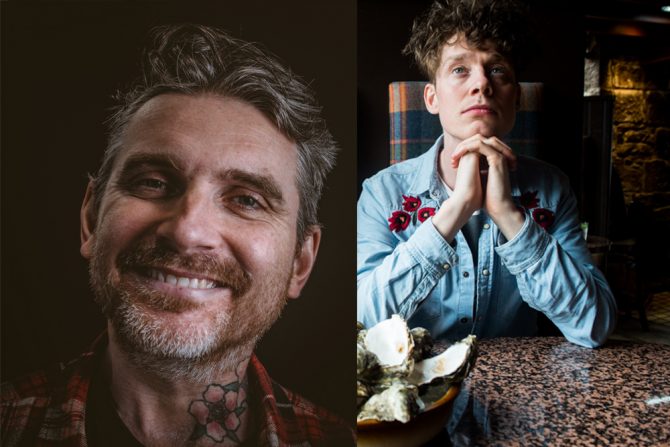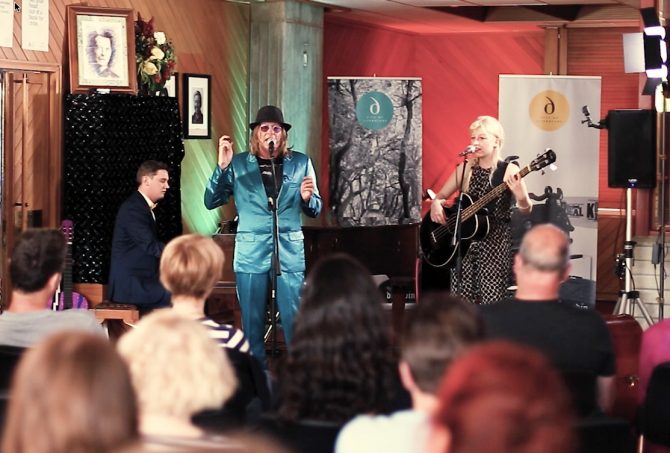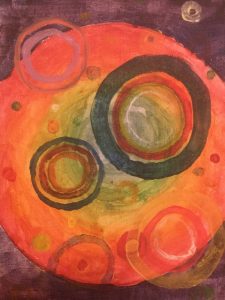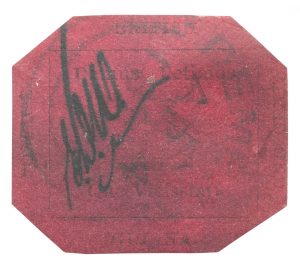 When Laurie Winkless, author of Science and the City, in conversation with Michelle Dickinson (aka Nanogirl) at the WORD Christchurch Festival yesterday, immediately outed herself as massive train and tunnel geek, I knew we were in safe hands. “London life” she said, “is defined by tube lines”. Laurie knows what she’s talking about. She lived in London for many years, as a student at University College London and then working at the National Physical Laboratory. Since then, while writing her book, she has been looking into how cities around the world work, and how science and technology can be used to improve the lives of city dwellers. I’ve blogged about this topic before, so I was delighted to hear more about what she found out.
When Laurie Winkless, author of Science and the City, in conversation with Michelle Dickinson (aka Nanogirl) at the WORD Christchurch Festival yesterday, immediately outed herself as massive train and tunnel geek, I knew we were in safe hands. “London life” she said, “is defined by tube lines”. Laurie knows what she’s talking about. She lived in London for many years, as a student at University College London and then working at the National Physical Laboratory. Since then, while writing her book, she has been looking into how cities around the world work, and how science and technology can be used to improve the lives of city dwellers. I’ve blogged about this topic before, so I was delighted to hear more about what she found out.

The conversation quickly turned to fatbergs, stinking accretions of fat and other unsavoury substances that so many of us misguidedly pour down our drains, which clog up the sewers of cities around the world. Reference was repeatedly made to the mythical place called “away” that we refer to when we “throw things away”. There is no away; these things have to end up somewhere. So-called “flushable wipes” may be flushable in the sense that they will go round the U-bend and disappear from view, but that doesn’t mean they are biodegradable and will breakdown somewhere in the waste disposal system; it just means they are someone else’s problem now, although they are still all our problem in the end as we have to pay for the resulting mess to be cleared up.
The tone of the conversation lifted only slightly when the topic turned to the concept of “toilet to tap” drinking water. This is the reverse of the usual situation. Laurie was incredulous that we currently flush our toilets with water that is clean enough to drink. How ridiculously inefficient is that?, she asked. With the right kind of processing however, toilet water can be turned into potable drinking water. The processing of course is crucial (“you really don’t want to have contact with faeces”, she said), and expensive, so this is only really a solution for drought-prone cities. Remarkably, blind taste tests have revealed that people actually prefer the taste of recycled water over tap water.
Even when the topic turned to transport we were straight back to hearing about human waste. We were shown a picture of a poo-powered bus. Hilariously, this was the number 2. Apparently, the taxis in Stockholm are partly fueled in this way. It’s genius really when you think about it, turning one problem (waste disposal) into the solution for another (fuel consumption). Brilliant!
Another huge source of waste is the way we treat our electronic devices as disposal ephemera, but this is changing. Landfill mining is now a major source of recycled materials for the industry. Experiments are currently underway to turn single-use plastic waste into building materials. There is even a trial of an asphalt mix that incorporates waste plastic currently underway at Christchurch Airport.
While Laurie had managed to restrain herself until now, she went into full on rant mode when it came to cars, roads, and traffic (although she confessed to being a motorsports fan). New Zealand, she told us, has the highest car ownership in the OECD. While there are understandable reasons for this that she recognizes (small pockets of people separated from each other by large distances) this threatens to impact on the clean green image that we trade on. Don’t think “Oh no, I’m stuck in gridlock” she said, “you are the gridlock!”. Fewer cars on our cities’ roads would have measurable economic and health benefits, but this would require alternative means of public transport, which would necessitate something of a culture-shift.
Michelle raised the interesting question of what cities might look like if they were designed by women. Laurie wouldn’t be drawn into making any firm conclusions, but she did make the point that “to build better cities we need to listen the voices of the people living in them, half of whom are women”. She seemed more concerned about listening to older people and those with access issues. “Cities built with older people in mind”, she said, “will be better for everyone”. “Modern cities are built to be easy to get to, but not worth arriving at”, she quipped.
This led on to a nuanced discussion of green spaces. Laurie is a big fan and cited many benefits of urban trees, not least their effect on cooling cities down. “We need to prioritise green over grey” she said. But she’s not such a fan of more gimmicky solutions, like living walls and vertical gardens, which she sees as largely hype and greenwashing, and she was ambivalent about urban farming. She would like to see a more evidence-based, problem-focused approach. Ask first what we are trying to achieve and then pick the best tools to do that job.
The conversation then moved on to smart cities. Smart cities rely on sensors she said, but these are difficult to incorporate into concrete buildings. There is a trend among urban planners and designers to add more and more sensors to every new structure that we build, but how we will use the enormous amounts of data that they collect is less clear. Laurie seemed to be calling for a more mindful approach, in which sensors are deployed to achieve particular aims, rather than incorporated willy-nilly into all our new buildings by default.
Before questions, the main part of the session concluded with a brief, but fascinating, discussion of driverless cars. They are not coming to all of us anytime soon, Laurie said, but we don’t have to wait for everyone to have one to reap the benefits. To illustrate this, we were shown a compelling video, which demonstrates that just one driverless car can improve traffic flow on a busy road.
Questions were taken at the end, most of which focused on local issues. Laurie clearly felt that New Zealand is doing some amazing things in this space, but not taking the credit it should for that. “New Zealand’s energy mix is the envy of the world”, she said. Let’s hope that local and central government start taking more notice of people like Laurie who have looked at cities around the world and understand the evidence the underpins the ways that science and technology can be used to improve our cities to all our benefits.
Further reading
For more on this topic, check out the booklist I put together for my blog about the Smart Cities Christchurch Innovation Expo
For more about how Christchurch City Council are using smart technologies check out the Smart Cities page on the Council’s website.
Also, check out The Kitchen Science Cookbook by Michelle Dickinson, which has received some rave reviews…





























